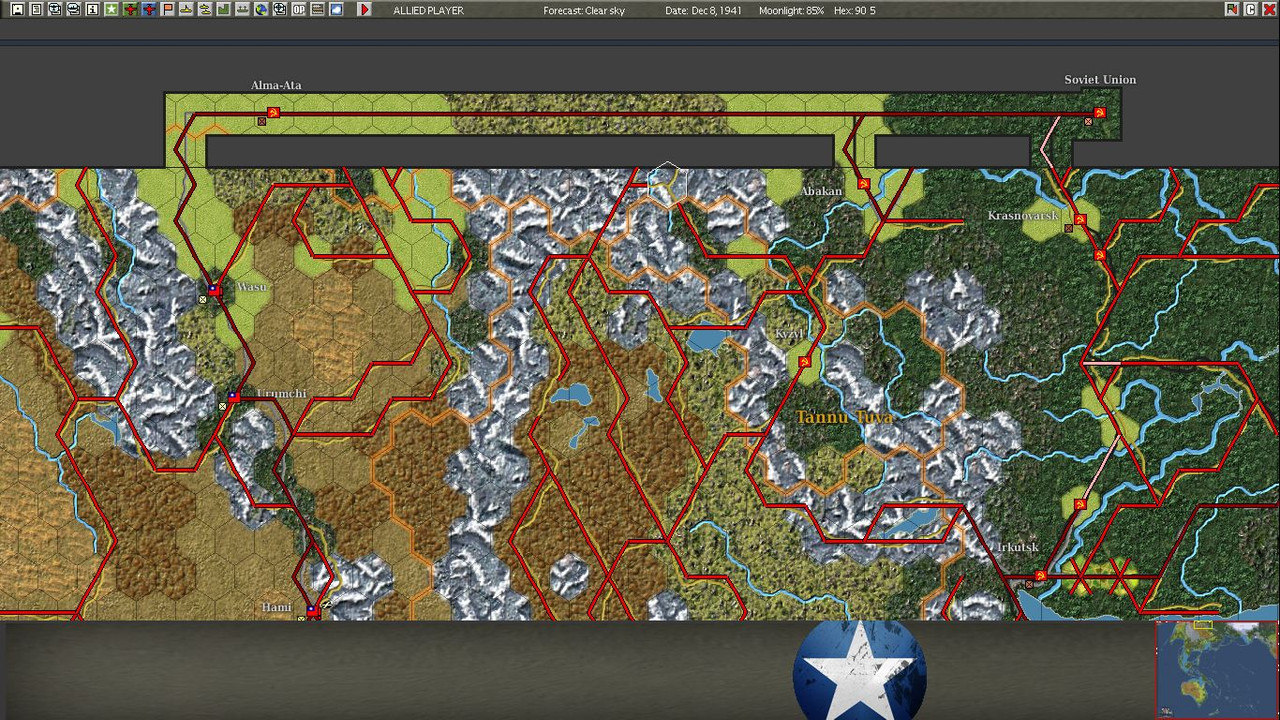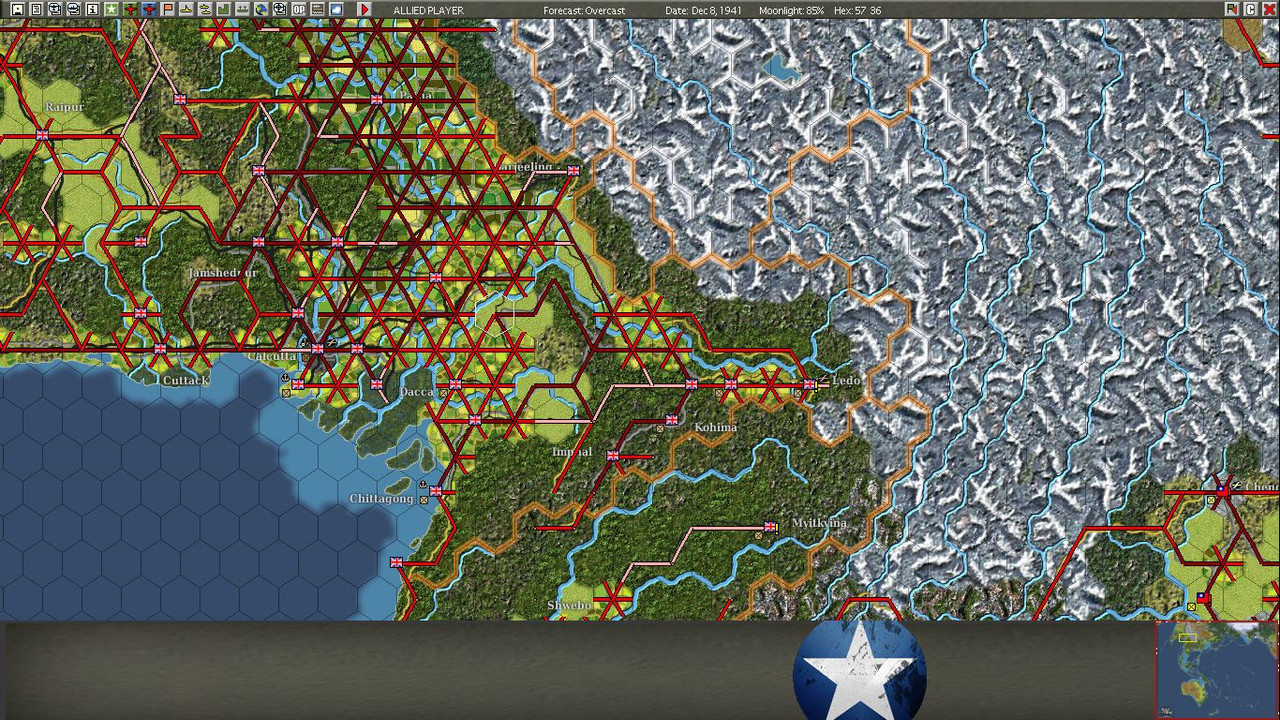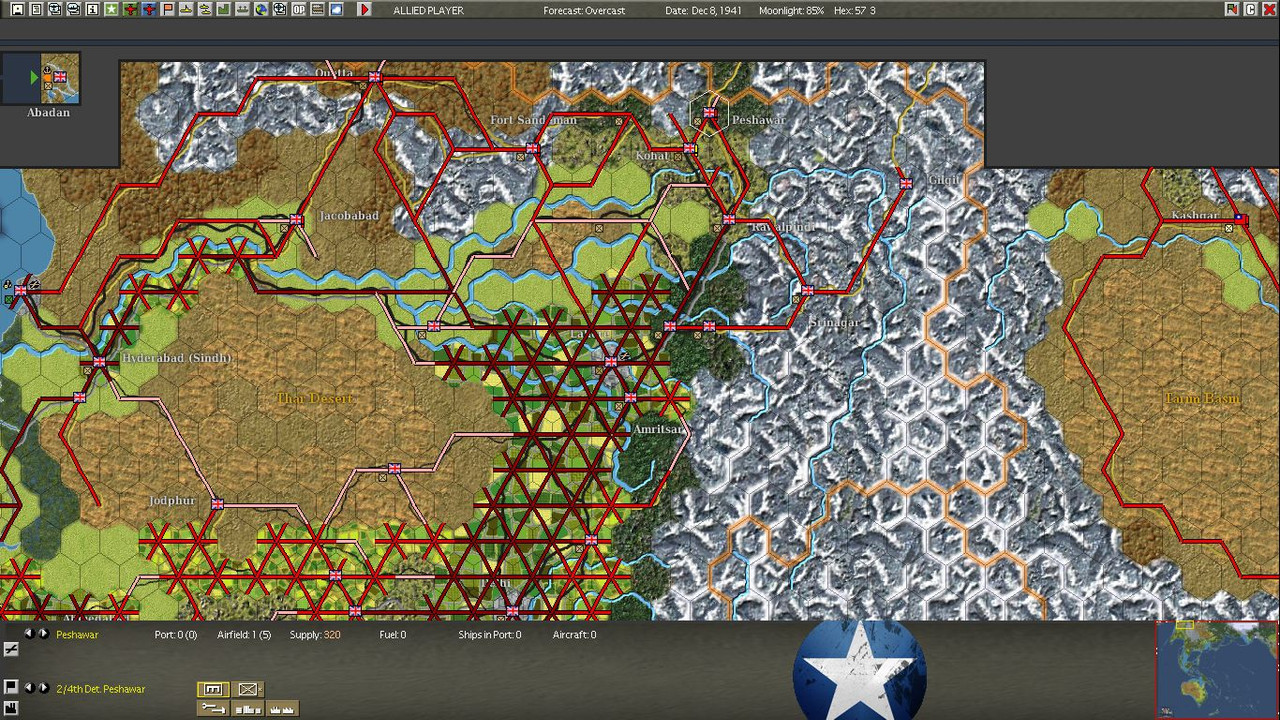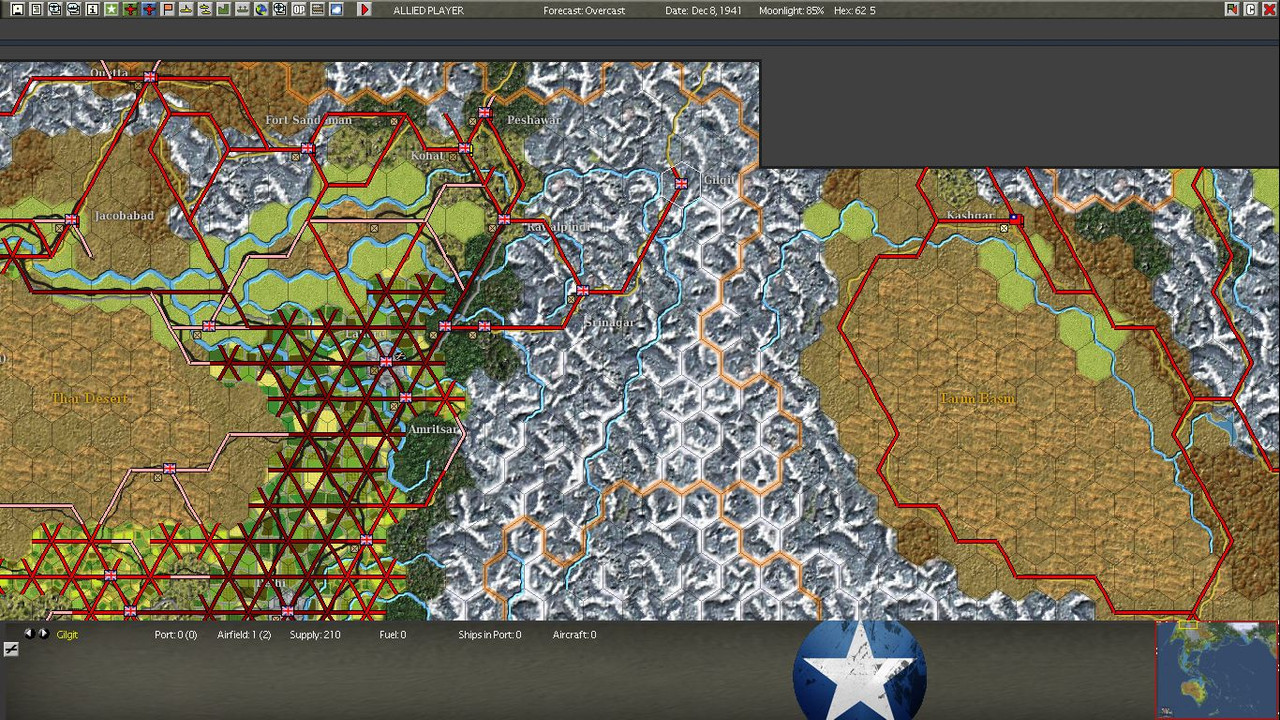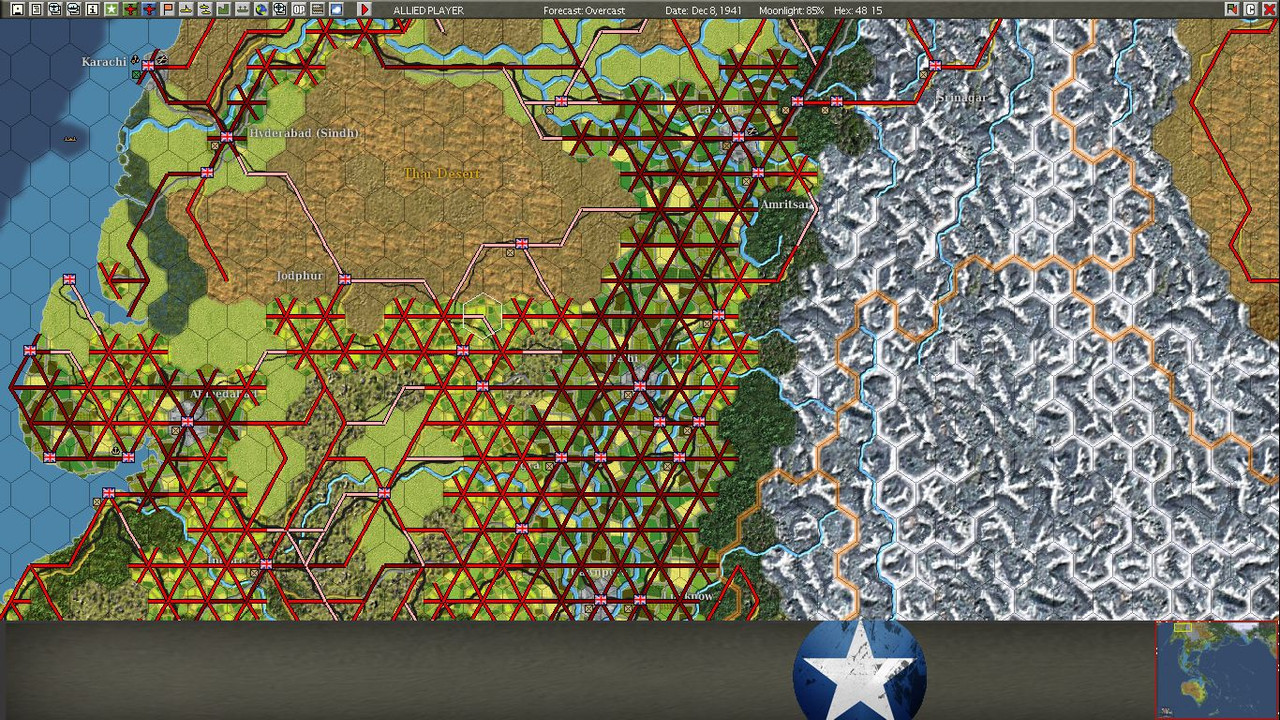Howland Island, 1 hex NW of Baker Island should have an airstrip on it. Three were constructed starting in 1937 and even though rough, they were good enough for someone to try and land on them if she could have found them. They were still available when Japan bombed them in 1941. So not only should the possibility be better than a 0(0) airfield, but one should already exist.
"Kamakaiwi Field
Ground was cleared for a rudimentary aircraft landing area during the mid-1930s, in anticipation that the island might eventually become a stopover for commercial trans-Pacific air routes and also to further U.S. territorial claims in the region against rival claims from Great Britain. Howland Island was designated as a scheduled refueling stop for American pilot Amelia Earhart and navigator Fred Noonan on their round-the-world flight in 1937. Works Progress Administration (WPA) funds were used by the Bureau of Air Commerce to construct three graded, unpaved runways meant to accommodate Earhart's twin-engined Lockheed Model 10 Electra.
The facility was named Kamakaiwi Field after James Kamakaiwi, a young Hawaiian who arrived with the first group of four colonists. He was selected as the group's leader and he spent more than three years on Howland, far longer than the average recruit. It has also been referred to as WPA Howland Airport (the WPA contributed about 20 percent of the $12,000 cost). Earhart and Noonan took off from Lae, New Guinea, and their radio transmissions were picked up near the island when their aircraft reached the vicinity but they were never seen again.
Japanese attacks during World War II
A Japanese air attack on December 8, 1941, by 14 twin-engined Mitsubishi G3M "Nell" bombers of Chitose Kōkūtai, from Kwajalein islands, killed colonists Richard "Dicky" Kanani Whaley and Joseph Kealoha Keliʻhananui. The raid came one day after the Japanese attack on Pearl Harbor and damaged the three airstrips of Kamakaiwi Field. Two days later, shelling from a Japanese submarine destroyed what was left of the colony's buildings.[25] A single bomber returned twice during the following weeks and dropped more bombs on the rubble. The two survivors were finally evacuated by the USS Helm, a U.S. Navy destroyer, on January 31, 1942. Thomas Bederman, one of the two survivors, later recounted his experience during the incident in a March 9, 1942 edition of Life.[26] Howland was occupied by a battalion of the United States Marine Corps in September 1943 and was known as Howland Naval Air Station until May 1944.
All attempts at habitation were abandoned after 1944. Colonization projects on the other four islands, also disrupted by the war, were also abandoned.[27] No aircraft is known to have landed on the island, though anchorages nearby were used by float planes and flying boats during World War II. For example, on July 10, 1944, a U.S. Navy Martin PBM-3-D Mariner flying boat (BuNo 48199), piloted by William Hines, had an engine fire and made a forced landing in the ocean off Howland. Hines beached the aircraft and, though it burned, the crew were unharmed, rescued by the USCGC Balsam (the same ship that later took the USCG's Construction Unit 211 and LORAN Unit 92 to Gardner Island), transferred to a sub chaser and taken to Canton Island.[28] "
https://en.wikipedia.org/wiki/Howland_I ... aiwi_Field







